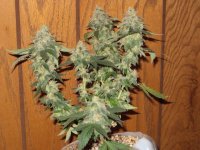caregiver77
New member
Here's a beginners guide to Hempy buckets I threw together for some friends. It is by no means definitive or exhaustive.
Anyone who has grown in Hempy buckets will tell you it's a super easy way to grow hydroponically. It combines the simplicity of top-fed soil with the productivity and precision of hydroponic growing. They are also super easy to construct!
Details on how to construct an original-style Hempy can be found here: https://www.icmag.com/ic/showthread.php?t=98419
In this tutorial we will be making a Hempy-style bucket using Perlite and Coco-Coir. Lets get to it!
Materials:
Bucket (walmart $1.50)
Perlite
Coco Coir (I use Bonticare 5kg bricks, about $17 around here)
Drill w/ bit 1/2" or 5/8" work well
Poly tube 3/8" or 1/2" ID depending on what size hole you drill
First hydrate/charge your coco with 1/2 strength nutrient solution. I use 6mL GH Flora Micro, 9mL GH Flora Bloom and 3mL CalMag+ per gallon of water for my full strength nutrient solution, so I dilute this 1:1 with tap water and pH to 5.8. Let your coco soak in the pre-charging solution.
Note: Many people rinse their coco thoroughly before charging, probably a good idea if you are unfamiliar with the brand of coco you are using! Some brands contain very high levels of salt that can be quite detrimental to your plants.
Now lets get the bucket ready.
Drill a hole 1½" from the bottom of the bucket
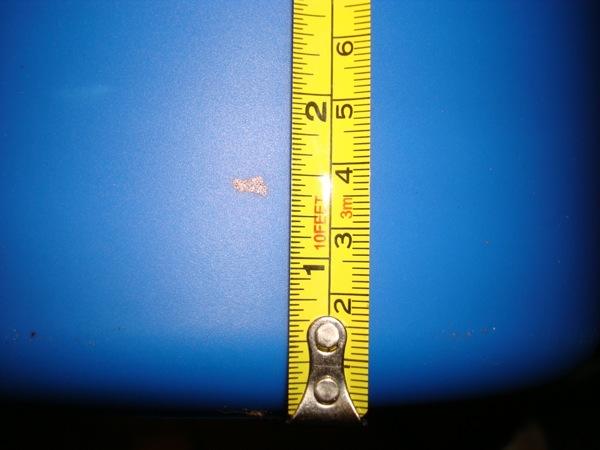
Fill the bucket up to and over the bottom of the hole with 100% perlite.
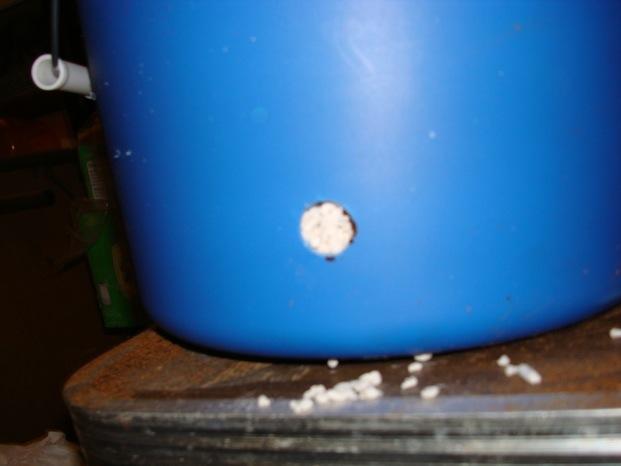
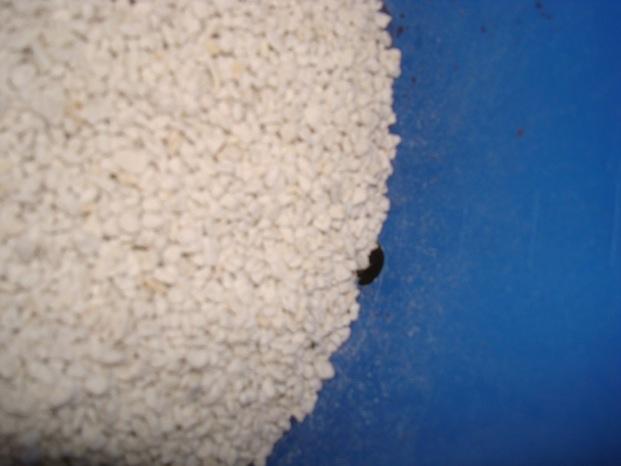
Fill a big bucket or mixing container halfway with hydrated/charged coco

Add an equal amount of perlite and mix up well. This is obviously easier in a shallow container. Storage bins work well.
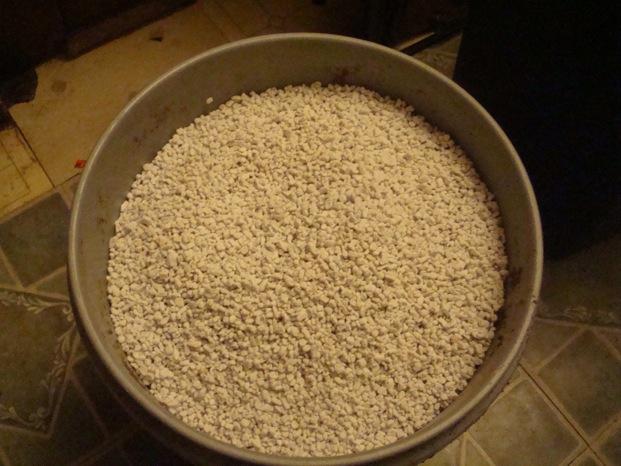
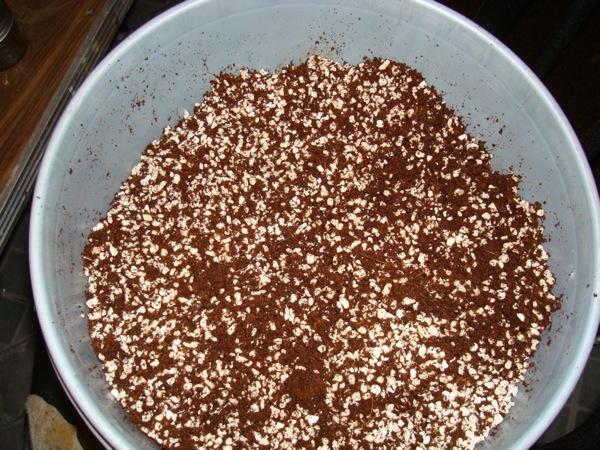
Add the 50/50 mix of perlite/coco so the middle 1/3 to 1/2 of the container contains the 50/50 mix.
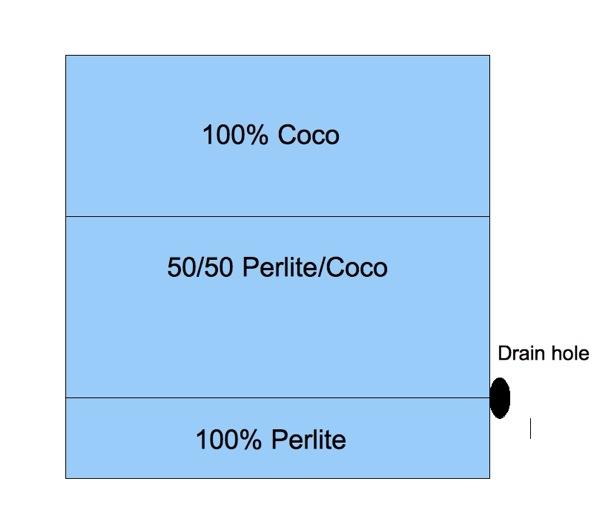
Now it's time to grab your transplants. I have well rooted feminized Bubblicious (Nirvana) here. You can go right in with a rooted plug if you like.
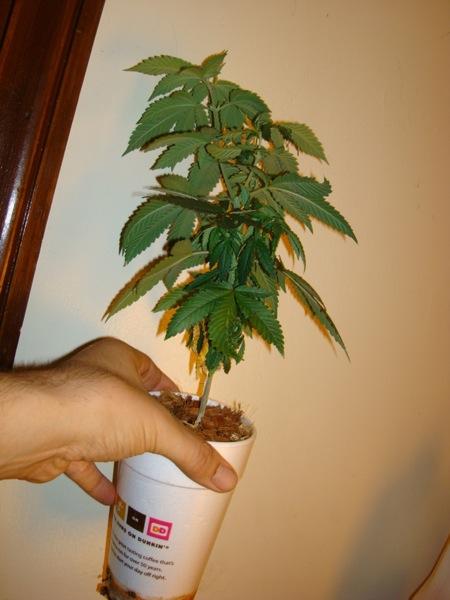
If you have a big transplant like I have, make a dent to fit the root ball. If you just have a rooted plug you can set it right on top or 1-2" above the 50/50 layer.
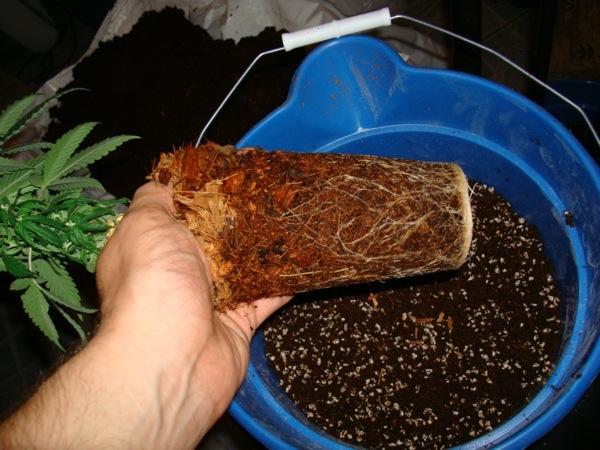
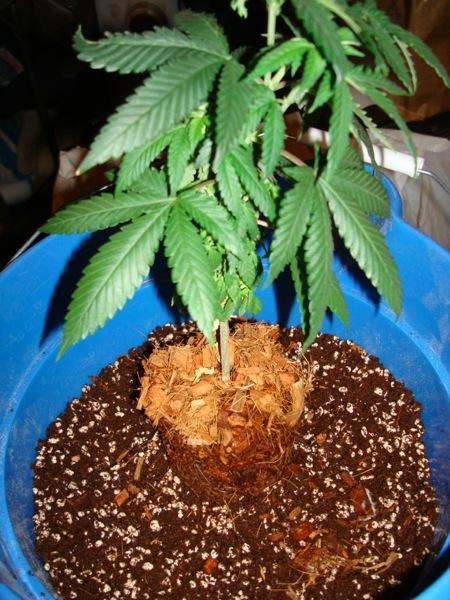
Next fill around your rootball or rooted plug with 100% coco. The extra moisture retention of the 100% coco will help foster lateral root growth and get our girls kickin quick!
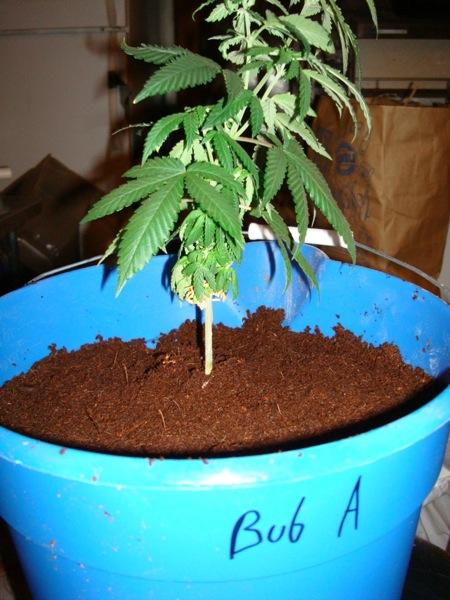
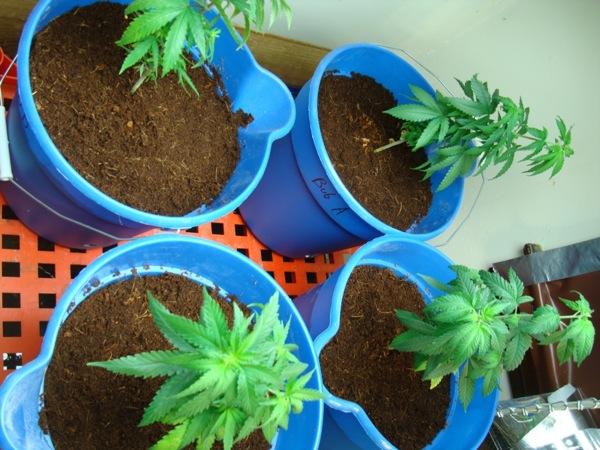
1-2 weeks later, roots have filled bucket, hit bottom and can drink from reservoir. I veg under T5's. Growth from here will be explosive.
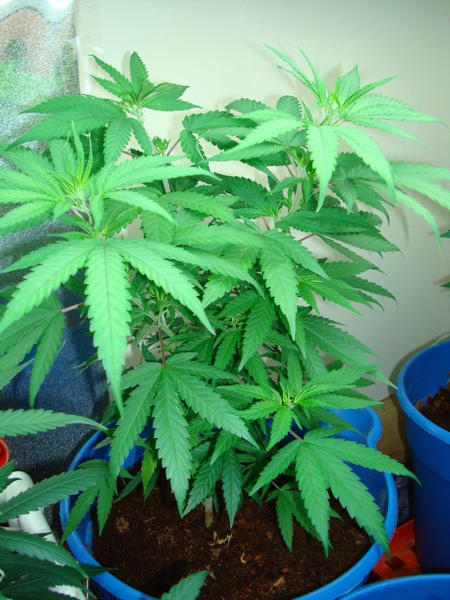
Don't forget to push your hose into the hole you drilled. Position the hose to drain into collection bucket.
Anyone who has grown in Hempy buckets will tell you it's a super easy way to grow hydroponically. It combines the simplicity of top-fed soil with the productivity and precision of hydroponic growing. They are also super easy to construct!
Details on how to construct an original-style Hempy can be found here: https://www.icmag.com/ic/showthread.php?t=98419
In this tutorial we will be making a Hempy-style bucket using Perlite and Coco-Coir. Lets get to it!
Materials:
Bucket (walmart $1.50)
Perlite
Coco Coir (I use Bonticare 5kg bricks, about $17 around here)
Drill w/ bit 1/2" or 5/8" work well
Poly tube 3/8" or 1/2" ID depending on what size hole you drill
First hydrate/charge your coco with 1/2 strength nutrient solution. I use 6mL GH Flora Micro, 9mL GH Flora Bloom and 3mL CalMag+ per gallon of water for my full strength nutrient solution, so I dilute this 1:1 with tap water and pH to 5.8. Let your coco soak in the pre-charging solution.
Note: Many people rinse their coco thoroughly before charging, probably a good idea if you are unfamiliar with the brand of coco you are using! Some brands contain very high levels of salt that can be quite detrimental to your plants.
Now lets get the bucket ready.
Drill a hole 1½" from the bottom of the bucket

Fill the bucket up to and over the bottom of the hole with 100% perlite.


Fill a big bucket or mixing container halfway with hydrated/charged coco

Add an equal amount of perlite and mix up well. This is obviously easier in a shallow container. Storage bins work well.


Add the 50/50 mix of perlite/coco so the middle 1/3 to 1/2 of the container contains the 50/50 mix.

Now it's time to grab your transplants. I have well rooted feminized Bubblicious (Nirvana) here. You can go right in with a rooted plug if you like.

If you have a big transplant like I have, make a dent to fit the root ball. If you just have a rooted plug you can set it right on top or 1-2" above the 50/50 layer.


Next fill around your rootball or rooted plug with 100% coco. The extra moisture retention of the 100% coco will help foster lateral root growth and get our girls kickin quick!


1-2 weeks later, roots have filled bucket, hit bottom and can drink from reservoir. I veg under T5's. Growth from here will be explosive.

Don't forget to push your hose into the hole you drilled. Position the hose to drain into collection bucket.



